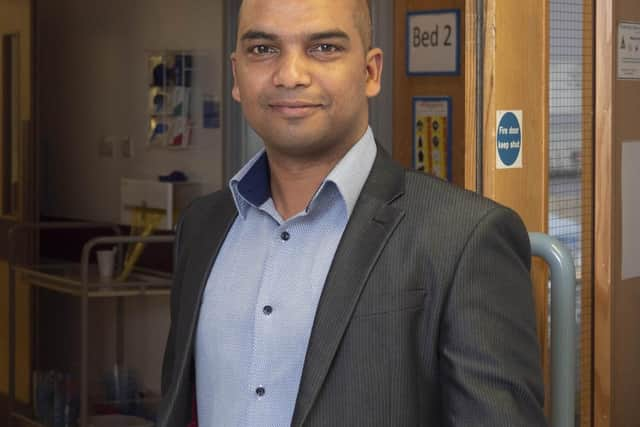Wigan doctor bids to allay fears about lung patients going into hospital during Covid-19 pandemic
and live on Freeview channel 276
The issue came to light after the family of a man with chronic obstructive pulmonary disease (COPD) spoke of their worries that he could contract Covid-19 while at Wigan Infirmary.
He was rushed to hospital with breathing difficulties and was tested for the coronavirus, leading to relatives being concerned that he could catch the virus while around other people waiting for test results.
Advertisement
Hide AdAdvertisement
Hide AdWWL has admitted patients with existing lung and respiratory conditions pose particular challenges in determining whether their ongoing illnesses or coronavirus are responsible for the symptoms they are brought to hospital with and ensuring they are not exposed to people who have Covid-19.


This is exacerbated by the fact the tests are not 100 per cent reliable.
While the Trust has said patients awaiting tests do have to be kept together it also stressed it strictly keeps those who are known to have Covid-19 apart from other people in the hospital.
The hospital said the procedure it is following is the same one other Trusts across the country are operating with.
Advertisement
Hide AdAdvertisement
Hide AdDr Abdul Ashish, respiratory consultant and divisional medical director at WWL, said: “We would like to reassure the public of the Wigan borough that all infection control and PPE measures are strictly adhered to during handling of suspected, positive or negative Covid-19 patients.
“Patients with existing lung conditions such as COPD are at higher risk of contracting Covid-19.
“Patients suspected of having Covid-19, based on their symptoms, X-ray results and blood test, are cohorted on suspected wards (yellow area), as is being done across the country.
“Such patients are not mixed with Covid-19 positive patients until we know the results of their swab tests.
Advertisement
Hide AdAdvertisement
Hide Ad“Once the swabs are done on these patients, and based on the results and the clinical suspicion of the medical teams concerned, the patient is then moved to a Covid-19 (blue area) or non-Covid-19 (green area) ward.
“It can often be challenging to manage these patients, as the swabs are truly positive only 70 per cent of the time. In cases where clinical suspicion still remains, based on other indicators, we send sputum tests for sophisticated tests (sputum PCR), which are more reliable, with 93 per cent true positive results. In the meantime, patients remain on suspected wards (the yellow area).”
The family who approached this newspaper said their relative had been tested twice due to the symptoms he was showing during his hospitalisation, with both returning negative.
This led to several moves between wards as he was shifted from the suspected ward to one for those who have had a negative result and back again.
Advertisement
Hide AdAdvertisement
Hide AdThe family said they were concerned that on the suspected ward he could be next to someone who would later turn out to have tested positive, putting him at higher risk.
NHS England has recently confirmed that it believes between 10 and 20 per cent of patients in its hospitals with Covid-19 contracted the disease after being admitted for another illness.